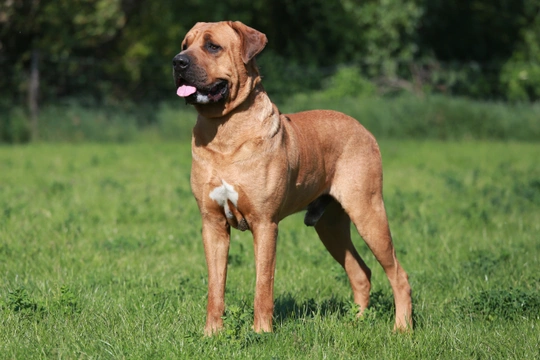
The four dog breeds banned within the UK
Within the UK, there are four breeds of dog that are banned, in so much as owning them, breeding them, importing them or selling them is forbidden by law. This is because the government, in consultation with various connected agencies such as DEFRA, considers that dogs of these breeds are potentially dangerous to other people, children and pets.
More about the rules and reasoning behind the Dangerous Dogs Act, which manages the rules of ownership over potentially dangerous dogs, can be found in this article.
While of course not all dogs or even most dogs from within any given breed will necessarily be aggressive or potentially dangerous, the government judges that these four specific breeds are more likely than most to have a tendency to aggression or be amenable to being trained for aggression. Added to this, that they have the size ands strength to present a serious risk to people if they attack. Understandably, the fact that these four breeds are banned and that they are considered to be dangerous or potentially aggressive by default is a matter of a significant amount of debate, with many dog lovers quite rightly feeling that it is generally the training and handling of dogs that dictates what their temperament will be.
However, the fact remains that you are extremely unlikely to see a legally owned dog of any of the following dog breeds being kept within the UK:
- The Pit Bull Terrier
- The Japanese Tosa
- The Dogo Argentino
- The Fila Brasileiro
In this article, we will tell you a little more about these four dog breeds, and their traits and appearance.
1. The Pit Bull Terrier
The Pit Bull Terrier is a popular pet in many countries of the world where ownership is permitted, particularly the USA. However, the Pit Bull is not specifically a breed of dog in its own right, but refers more to a dog of a certain type, that has common traits and often, ancestry with dogs such as the Staffordshire Bull Terrier, the Bull Terrier, and the American Pit Bull Terrier.
Dogs of the Pit Bull type are usually comprised of a crossing of a terrier breed and a bull breed, and will be medium sized, compact, and very muscular. They are available in a wide range of different colours, with a short, single layered coat. Historically the Pit Bull was used to assist with hunting and the management of livestock, but unfortunately, as well as finding homes with a great many responsible and loving owners, today, the Pit Bull is also a commonly seen dog in illegal dog fights.
2. The Japanese Tosa
The Japanese Tosa is of course a Japanese dog, and one that is very rare in both Japan and further afield today. As well as being banned within the UK, the Japanese Tosa is banned in several other countries as well, including Australia, Denmark, Norway and New Zealand. They can vary considerably in size from 80lb up to 200lb, and have a short, single layered coat that usually falls in the fawn or red colour spectrum.
The Japanese Tosa was originally bred as a fighting dog, a role that it is still unfortunately used for today, hence its inclusion on the banned list.
3. The Dogo Argentino
The Dogo Argentino is a large and very muscular dog from Argentina, and was initially developed for the hunting of big game, and personal protection. They were mainly bred from the now-extinct Cordoba Fighting Dog, and were trained and bred to work well with other dogs without showing aggression.
The intention of breeding the Dogo Argentino was also to breed out the inherently aggressive traits of the Cordoba Fighting Dog, and this was largely successful. However, due to their stamina, persistence and fearlessness, the Dogo Argentino has also been trained and used for fighting roles for much of its history. The Dogo Argentino is banned in Australia, Iceland, Singapore and Ukraine, as well as the UK.
4. The Fila Brasileiro
The Fila Brasileiro or the Brazilian Mastiff is a dog from the Molosser grouping, with ancestry in the English Mastiff, Bloodhound and others. They are tall, heavy and muscular dogs with a large head and muzzle, large bones and loose skin. They also have an unusual moving gait known as “pacing,” where the legs move in pairs on the same side of the body rather than diagonally.
The Fila Brasileiro was originally renowned for its worth as a working dog, with great stamina and a superior ability to track. However, the breed is also renowned for its short temper and aggressive nature, and attempts to socialise and train puppies of the breed to a calmer attitude are only partially successful, hence the dog’s inclusion on the banned list. The Fila Brasileiro is not only banned within the UK, but also several other countries including Australia, Israel, Denmark, Malta and Cyprus.



